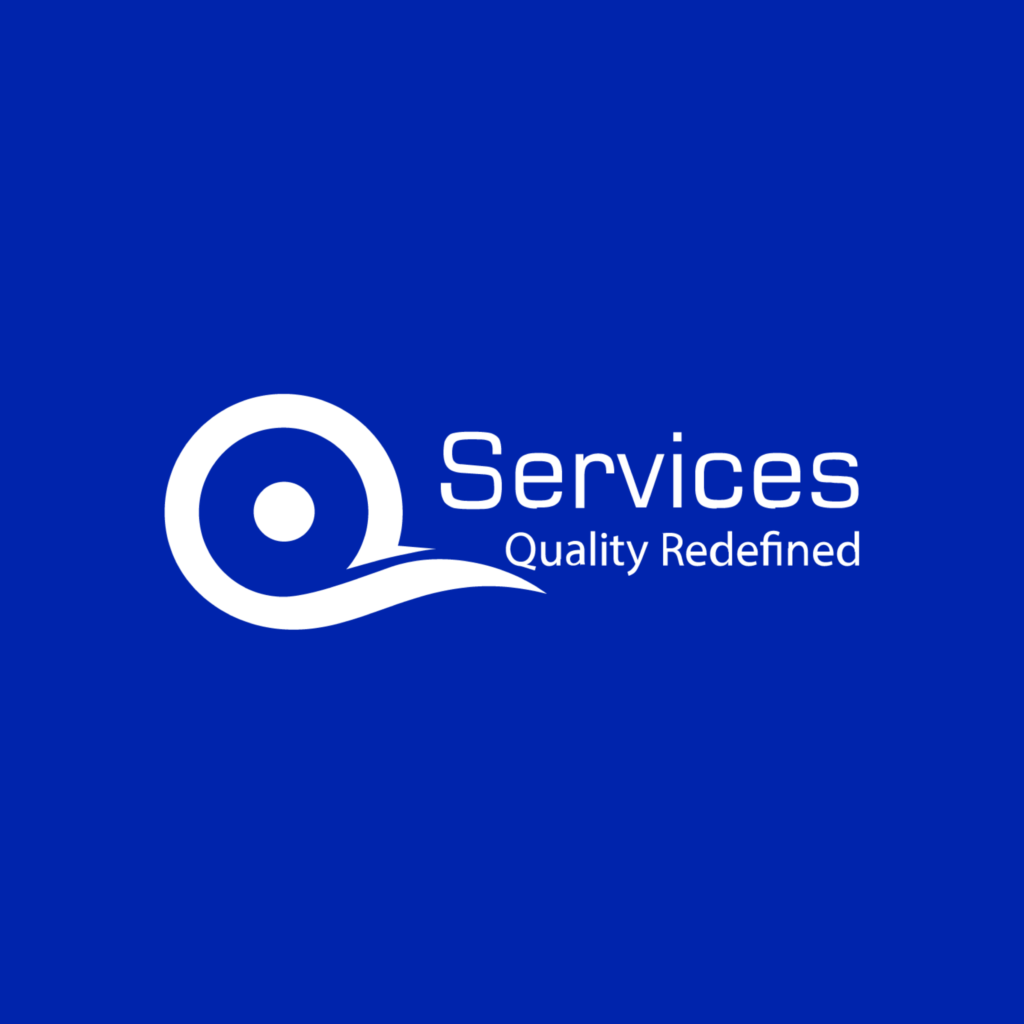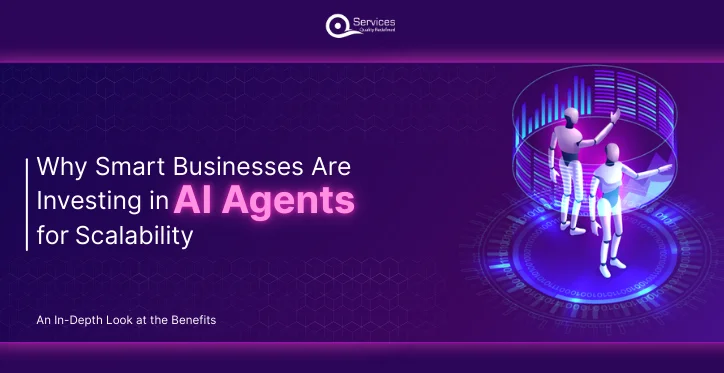![Azure vs AWS Cost Comparison Financial Services Cloud Migration Calculator [Case Study]](https://www.qservicesit.com/wp-content/uploads/2025/03/Azure-vs-AWS-Cost-Comparison-Financial-Services-Cloud-Migration-Calculator-Case-Study-.webp)
Rewards
.





CANADA
55 Village Center Place, Suite 307 Bldg 4287,
Mississauga ON L4Z 1V9, Canada
Certified Members:
.



Home » Enhancing Reliability: Predictive Maintenance with Azure ML in Oil and Gas Industry

The oil and gas industry uses intricate infrastructure and equipment to extract, process, and transport resources. Keeping these assets reliable and safe is vital for efficient operations. Traditionally, maintenance approaches have been reactive or preventive, often causing unexpected downtime, higher maintenance costs, and safety risks. But with AI and machine-learning advancements, predictive maintenance has emerged. This proactive method predicts equipment failures using real-time data and analytics services in oil and gas. By spotting issues early, companies can plan maintenance during routine downtimes, preventing costly disruptions, lowering downtime, improving safety, and optimizing production schedules.
An average oil and gas company faces around 27 days of unplanned downtime annually, costing millions. By adopting predictive maintenance, one offshore oil and gas company reduced downtime by 20%, increasing annual production by over 500,000 barrels. Microsoft Azure Machine Learning (Azure ML) plays a crucial role, offering seamless data integration, a wide range of machine learning algorithms, and real-time equipment health insights. Let’s discover how AI in predictive maintenance with Azure ML is reshaping efficiency and reliability in the oil and gas sector.
Reliability and maintenance are essential for smooth operations in oil and gas facilities. Here’s why they matter:
Ensuring Safety and Asset Integrity: In the oil and gas sector, where hazardous materials and high pressures are common, reliable equipment is crucial to prevent accidents and environmental damage through regular maintenance and adherence to safety standards.
Improving Operational Efficiency: Reliable equipment reduces unplanned downtime, ensuring consistent operation of pumps, compressors, valves, and pipelines, which optimizes production and resource use.
Cost Management: Predictive maintenance helps prevent costly breakdowns by identifying issues early, allowing for scheduled maintenance during planned downtimes. This proactive approach minimizes repair costs and production losses, contributing to overall cost savings.
Get free Consultation and let us know your project idea to turn into an amazing digital product.
Data Acquisition: Collecting sensor data, equipment logs, and other relevant information from disparate sources within the facility.
Preprocessing: Ensuring data quality through cleaning, normalization, and feature extraction.
Feature Engineering: Identifying relevant variables and transforming raw data into informative features.
Model Training: Developing predictive algorithms that learn from historical data to forecast future equipment behavior and performance.
Deployment: Integrating predictive models into existing software systems, data pipelines, and operational workflows within the facility.
Early Issue Detection: Predictive maintenance technologies utilize advanced data analytics and machine learning to foresee equipment failures before they happen. By continuously monitoring real-time sensor data and historical records, companies can proactively identify anomalies and take preventive action.
Reduced Downtime: Predictive maintenance significantly decreases unplanned downtime by enabling companies to schedule maintenance during planned shutdowns, thereby avoiding disruptions to production. For instance, a pump failure on an offshore rig can lead to millions in lost production per day.
Cost Savings: Implementing predictive maintenance results in substantial cost savings by preventing breakdowns. Companies can reduce expenses related to repairs, replacement parts, and emergency services. According to McKinsey, predictive maintenance can cut maintenance costs by up to 30%.
Improved Safety and Compliance: Maintaining reliable equipment enhances safety for workers and mitigates environmental risks. Adhering to regulations and industry standards becomes more manageable when equipment is well-maintained and operates consistently.
When we talk about AI in predictive maintenance, it transforms the industries equipment management, reliability and operational efficiency. Here’s a concise exploration of key AI methodologies essential for forecasting maintenance needs:
Predict remaining useful life and equipment health scores from historical data, aiding proactive maintenance.
Categorize equipment states (normal, faulty, critical) using labeled data to optimize maintenance interventions.
Group equipment with similar sensor data to swiftly identify anomalies.
Utilize techniques like PCA to simplify data and enhance anomaly detection.
Optimize maintenance schedules based on real-time operational feedback.
Analyze sensor imagery (e.g., thermal) to detect anomalies like corrosion.
Process sequential sensor data for failure prediction.
Extract features and detect subtle equipment deviations autonomously.
Apply Z-score, moving averages, and exponential smoothing to detect sensor reading deviations.
Identify anomalies by isolating data clusters within a tree-based structure.
Enhance accuracy by capturing complex data patterns and flagging deviations.
Model equipment behaviour and predict performance metrics based on sensor inputs.
Combine predictions from multiple trees to assess maintenance needs and operational risks robustly.
Data Collection: Continuously gather sensor data (e.g., vibration, temperature, pressure) to build a foundation for predictive models.
Feature Engineering: Extract and preprocess relevant features from raw sensor data to optimize model performance and reliability.
Model Training: Train AI models using comprehensive historical data sets, refining predictions for equipment health and maintenance scheduling.
Real-Time Monitoring: Deploy AI models to monitor live sensor data, promptly alerting maintenance teams to potential issues and optimizing response times.
Predictive Maintenance: Forecast remaining equipment lifespan, failure probabilities, and optimal maintenance schedules to minimize downtime and maximize operational efficiency.
Microsoft Azure’s ML capabilities are designed to meet the unique challenges of industrial applications, empowering industries with AI-driven operational efficiency and predictive insights. Azure ML plays a pivotal role in implementing AI in industrial maintenance, offering a comprehensive suite covering the entire ML lifecycle:
In industrial settings, reliability and scalability are crucial factors, considering that Azure ML offers a comprehensive suite covering the entire ML lifecycle:
Simplifying data ingestion, cleansing, and transformation to focus on insights.
Harnessing Azure’s computational power to optimize models for predictive maintenance and anomaly detection.
Seamless deployment and real-time monitoring ensure continuous model performance evaluation.
Azure ML supports popular frameworks like PyTorch, TensorFlow, and Scikit-Learn.
Empowering data scientists to select the best framework for tasks—from deep learning to traditional ML.
Seamless integration with Azure services, including Azure data analytics, enhances workflow efficiency. This allows for comprehensive data analytics capabilities alongside powerful machine learning tools, enabling streamlined operations and insightful data-driven decisions.
Efficient model deployment and management are critical in industrial environments.
Automating model deployment for rapid iteration and updates.
Proactively monitor model health for accurate predictions in evolving conditions.
Azure Machine Learning (Azure ML) and Azure IoT solutions play a significant role in enhancing reliability through predictive maintenance. This integration allows industry leaders to proactively manage equipment performance, optimize maintenance schedules, and ensure efficient resource allocation.
Azure ML Studio provides a collaborative environment where data scientists utilize advanced analytics in oil and gas to develop predictive models.
Benefits:
By analyzing historical data, models predict equipment failures preemptively, minimizing unplanned downtime.
Predictive insights facilitate scheduling maintenance during planned shutdowns, reducing operational costs.
Reliable equipment ensures consistent production levels, optimizing resource allocation.
Azure IoT Hub serves as a central platform for aggregating real-time data from sensors deployed across oil rigs, pipelines, and critical equipment.
Benefits:
Real-time anomaly detection triggers prompt alerts for swift intervention by maintenance teams.
Reliable data aggregation ensures adherence to safety and industry standards.
Early anomaly detection helps prevent costly breakdowns and emergency repairs.
Consider an offshore oil rig equipped with sensors monitoring temperature, pressure, and vibration.
Implementation:
Sensors transmit data to Azure IoT Hub for centralized aggregation.
Segmented data streams cater to different operational needs, including maintenance and safety.
Develop a Node.js web app for local real-time sensor data visualization.
Host the application for broader accessibility.
Azure IoT services enable seamless integration with Azure Stream Analytics to route data to Power BI for insightful visualization, leveraging azure analytics services for comprehensive data analysis.
Azure IoT Edge empowers edge devices such as gateways and rigs with advanced AI capabilities, enabling autonomous data processing and analysis directly at the source.
Benefits:
By enabling edge devices to perform AI tasks locally, Azure IoT Edge significantly shortens the time required to detect anomalies. This rapid response is critical for maintaining peak operational efficiency in environments where immediate action is essential.
Localized AI processing reduces the strain on network bandwidth by handling data-intensive tasks at the edge. This efficiency lowers costs associated with transmitting large data volumes across long distances.
Azure IoT Edge excels in remote and harsh environments, such as offshore rigs or remote pipelines, where connectivity may be unreliable. In these scenarios, local data processing ensures uninterrupted monitoring and operational insights without relying on continuous network connectivity.
This integrated approach demonstrates Azure’s transformative impact on predictive maintenance within the oil and gas sector, ensuring enhanced reliability, safety, and operational cost-effectiveness across diverse operational environments.

Oil and gas facilities face significant challenges from corrosion, which can result in unplanned downtime and safety hazards. CamIn revolutionzed the maintenance with real-time wall thickness measurements using advanced sensors and robotics like drones and crawlers. The results were impressive:
Predictive monitoring reduced damages by 15-35%, saving on costly repairs.
Early detection prevented leaks and environmental incidents.
Remote monitoring eliminated frequent physical inspections, optimizing operational workflows.
Birlasoft implemented several Azure ML-driven solutions across various aspects of oil and gas operations:
Predictive models proactively monitor pump health, preventing failures and optimizing maintenance schedules.
Real-time data aggregation from vessel sensors ensures timely maintenance, minimizing downtime and enhancing reliability.
AI-driven insights predict equipment issues, improving safety and operational efficiency.
Predictive analytics prevent pressure-related failures, reducing production disruptions.
Azure ML models analyze machinery data, extending asset lifespan and reducing operational costs.
As oil and gas firms increasingly prioritize predictive maintenance as a strategic imperative, Azure ML stands at the forefront, driving innovation and sustainability. By leveraging Azure ML, companies can navigate the complexities of asset management with confidence, ensuring continuous improvement in operational efficiency, cost-effectiveness, and environmental stewardship. Azure maintenance is enhanced through advanced AI and ML technologies, enabling companies to mitigate risks associated with equipment failures and pave the way for sustainable operational practices and regulatory compliance.
Looking ahead, securing and streamlining operations in the oil and gas sector remains critical. In our next exploration, we delve into how Azure Active Directory and DevOps enhance security protocols and operational workflows, ensuring robustness in data management and efficiency in project delivery. Stay tuned to discover how these integrated solutions bolster reliability and streamline operations across the industry.

Our Articles are a precise collection of research and work done throughout our projects as well as our expert Foresight for the upcoming Changes in the IT Industry. We are a premier software and mobile application development firm, catering specifically to small and medium-sized businesses (SMBs). As a Microsoft Certified company, we offer a suite of services encompassing Software and Mobile Application Development, Microsoft Azure, Dynamics 365 CRM, and Microsoft PowerAutomate. Our team, comprising 90 skilled professionals, is dedicated to driving digital and app innovation, ensuring our clients receive top-tier, tailor-made solutions that align with their unique business needs.
![Azure vs AWS Cost Comparison Financial Services Cloud Migration Calculator [Case Study]](https://www.qservicesit.com/wp-content/uploads/2025/03/Azure-vs-AWS-Cost-Comparison-Financial-Services-Cloud-Migration-Calculator-Case-Study-.webp)
This blog breaks down the Azure vs AWS cost comparison for financial services, using real case studies to explain the cost factors.

With AI, businesses can make better decisions, improve workflows, and create new opportunities—all while saving time and resources. But how exactly does this work? Which industries use AI the most?

In the current era, where customers are more demanding than ever, banks need to provide solutions that are quick, personalized, and efficient. Seems like a challenge? Well, not with Agentic Automation.
Predictive maintenance using machine learning in the oil and gas industry uses AI to analyze equipment sensor data. It predicts failures before they happen, allowing proactive maintenance to minimize downtime, cut costs, improve safety, and optimize production efficiency.
In the oil and gas industry, predictive maintenance refers to the application of cutting-edge artificial intelligence and machine learning technology to forecast equipment failure. Through the examination of both historical trends and real-time sensor data, this method enables businesses to plan maintenance in advance.
To leverage machine learning in the oil and gas industry, companies can implement predictive maintenance solutions using platforms like Azure ML. This involves gathering real-time sensor data from equipment, utilizing AI models to predict failures proactively, optimizing maintenance schedules, and ensuring continuous operational efficiency and safety across diverse operational environments.
The oil and gas industry leveraging predictive modelling to implement proactive change management strategies, enhancing operational efficiency, reducing downtime, and optimizing maintenance schedules through advanced AI and machine learning technologies.
Reactive Maintenance: Fixes assets only after they fail. For example, a motor is serviced when it stops working. While it maximizes component lifetime, it introduces unexpected downtime and collateral damage.
Preventive Maintenance: Follows a fixed schedule based on prior failure experience. PdM also prevents issues before they occur but considers actual equipment utilization instead of fixed intervals.
Schedule a Customized Consultation. Shape Your Azure Roadmap with Expert Guidance and Strategies Tailored to Your Business Needs.
.





55 Village Center Place, Suite 307 Bldg 4287,
Mississauga ON L4Z 1V9, Canada
.




Founder and CEO

Chief Sales Officer

🎉 Thank you for your feedback! We appreciate it. 🙌